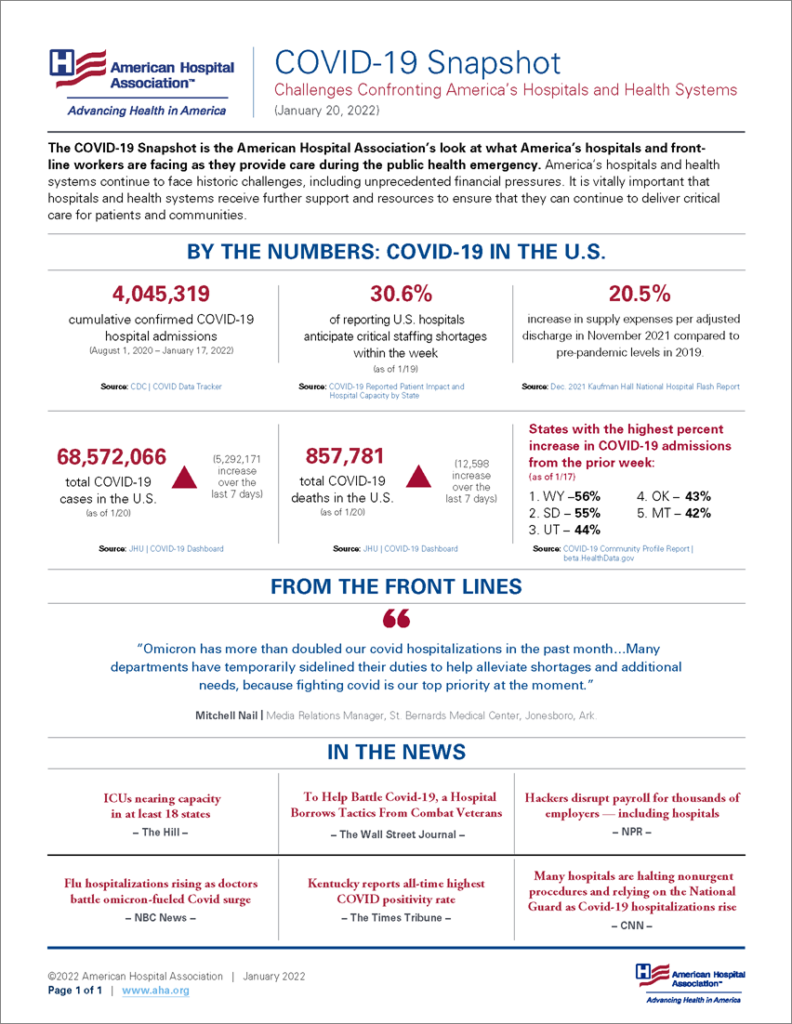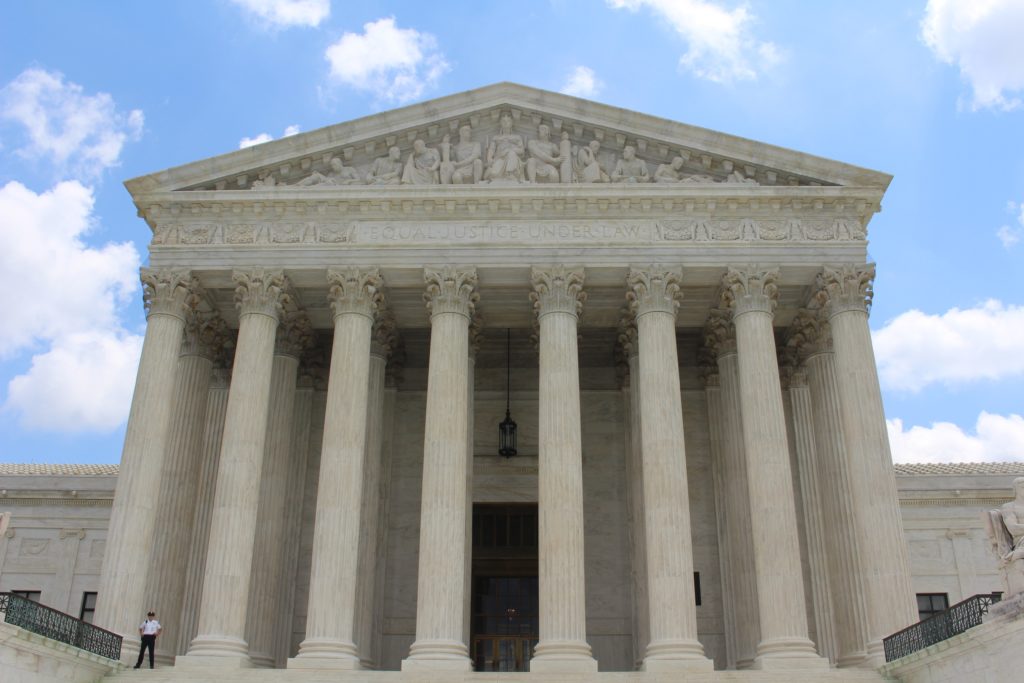Tuesday’s Tidbits

From the Omicron front, the Wall Street Journal reports that
Covid-19 deaths in the U.S. have reached the highest level since early last year, eclipsing daily averages from the recent Delta-fueled surge, after the newer Omicron variant spread wildly through the country and caused record-shattering case counts.
The seven-day average for newly reported Covid-19 deaths reached 2,191 a day by Monday, up about 1,000 from daily death counts two months ago, before Omicron was first detected, data from Johns Hopkins University show. While emerging evidence shows Omicron is less likely to kill the people it infects, because the variant spreads with unmatched speed the avalanche of cases can overwhelm any mitigating factors, epidemiologists say.
“You can have a disease that is for any particular person less deadly than another, like Omicron, but if it is more infectious and reaches more people, then you’re more likely to have a lot of deaths,” said Robert Anderson, chief of the mortality-statistics branch at the National Center for Health Statistics, which is part of the Centers for Disease Control and Prevention.
Bloomberg adds that
Covid-19’s deadly effects manifest long after some patients leave the hospital, according to a new study that points to the pandemic’s grave aftermath.
Hospitalized patients who survived at least a week after being discharged were more than twice as likely to die or be admitted again within months, scientists from the London School of Hygiene and Tropical Medicine and the University of Oxford found. The Covid survivors also had an almost five times greater risk of dying in the following 10 months than a sample taken from the general population.
The findings, published Tuesday in the journal PLOS Medicine, add to evidence that the pandemic’s effects on health and wellbeing extend well beyond an initial infection. A Dutch study on Monday showed that three-quarters of Covid patients treated in intensive care were still suffering fatigue, impaired fitness and other physical symptoms a year later, and one in four reported anxiety and other mental symptoms.
“Covid-19 isn’t just an acute respiratory viral illness — like a cold or some other inconsequential infection — that goes away in a few days or a few weeks,” said Ziyad Al-Aly, director of the clinical epidemiology center at the Veterans Affairs St. Louis Health Care System in Missouri, who has led similar studies in the U.S. “It carries serious long-term consequences, including higher risk of death.” * * *
Needless to stay these articles illustrate the importance of being vaccinated with a booster against Covid.
From the free COVID tests front, MedCity News reports that
In the days since the Biden Administration announced on January 15 that insurers would be required to cover eight over-the-counter Covid-19 tests per month for members, digital health company Truepill has been busy developing a platform to help health plans meet that mandate.
In May, the San Mateo, California-based startup, which provides pharmacy fulfillment and telehealth services for brands like Hims, Nurx and Lemonaid, added home testing. Co-founder and President Sid Viswanathan said in an earlier interview that the company had planned to also offer diagnostics from the beginning.
The Covid-19 test coverage platform will give clients a behind-the-scenes partner who can assist with everything from checking member eligibility for coverage of tests to delivering those tests to their homes and providing shipping updates en route.
“We found a lot of plans are having to react to this on very short timelines, and so we’re building out a white-labeled, e-commerce experience that a plan can utilize,” said Varun Boriah, senior vice president of diagnostics at Truepill, in a phone interview. “We can put any plan’s logo on that asset and manage their patient experience for them.”
Cool.
From the OSHA vaccinate or test mandate front, the Society for Human Resource Management informs us
The Occupational Safety and Health Administration (OSHA) is withdrawing its emergency temporary standard (ETS) that would have required by Feb. 9 that large businesses ensure employees are vaccinated against the coronavirus or undergo weekly COVID-19 testing. Nonetheless, the agency is moving forward with its proposal to make the temporary directive a permanent standard.
On Jan. 13, the U.S. Supreme Court halted the ETS while the 6th U.S. Circuit Court of Appeals considered the merits of the challenge against the vaccination-or-testing directive. OSHA announced on Jan. 25 that it will no longer seek to enforce the ETS, which will end the lawsuit, but the temporary directive served a dual purpose. The ETS also acts as a proposal for a permanent standard, which is separate from the litigation. “OSHA is not withdrawing the ETS to the extent that it serves as a proposed rule,” according to the agency. * * *
OSHA said in a statement that it is prioritizing a proposal for a permanent COVID-19 safety standard for health care workers.
“Notwithstanding the withdrawal of the [ETS], OSHA continues to strongly encourage the vaccination of workers against the continuing dangers posed by COVID-19 in the workplace,” the agency said.
The FEHBlog noticed that the Justice Department has asked the U.S. Court of Appeals for the Sixth Circuit to dismiss the consolidated challenge to the OSHA ETS as moot citing this OSHA action.
From the mental health parity front, the Department of Health and Human Services announced the release of the government’s
2022 Report to Congress on the Paul Wellstone and Pete Domenici Mental Health Parity and Addiction Equity Act of 2008 – PDF. The report includes information that suggests health plans and health insurance issuers are failing to deliver parity for mental health and substance-use disorder benefits to those they cover. The report also highlights the departments’ recent emphasis on greater MHPAEA enforcement in addition to guidance to correct those failures, and makes recommendations to strengthen MHPAEA’s consumer protections and enhance the departments’ enforcement abilities.
The FEHBlog is not surprised at allegations on non-compliance because this is a very complicated. The law requires carriers to build walls between physical and mental health benefits and then ensure parity in quantitative and nonquantitative treatment limits. Why not break down the wall and define general coverage rules to embrace mental and substance use disorder care? Simply put, establish one set of rules for both types of care.
From the healthcare business front, Bloomberg reports that
Change Healthcare Inc. is considering selling some assets to clear the way for its $8 billion acquisition by UnitedHealth Group Inc., according to people with knowledge of the matter.
The company is working with advisers on a possible divestiture of its payment integrity business, ClaimsXten, said the people, who asked not to be identified because the information is private. ClaimsXten could fetch a value of more than $1 billion, the people said. The business generates $130 million to $150 million in annual earnings before interest, taxes, depreciation and amortization, they said.
There’s no certainty a deal for ClaimsXten will be reached or that it will be enough to satisfy regulators, the people said.
A representative for Change Healthcare didn’t immediately respond to requests for comment. A spokesperson for UnitedHealth declined to comment.
UnitedHealth and Change Healthcare have been caught in a regulatory limbo over their proposed merger since the U.S. Justice Department opened an investigation into the deal in March, two months after it was announced.
Can’t blame Change for trying.
From the benefit design front, Govexec offers a helpful article about the advantage of enrolling in a high deductible plan which permits funding a health savings account. Contributions to an HSA are tax deductible when contributed; grow tax free, and tax exempt when withdrawn for healthcare purposes. You can’t beat that.
Drug Channels offers a January news roundup featuring an Insulin G2N Update; OptumRx “Data,” HDHPs, 340B Projections, and Fun with the CDC. What’s not to like?










